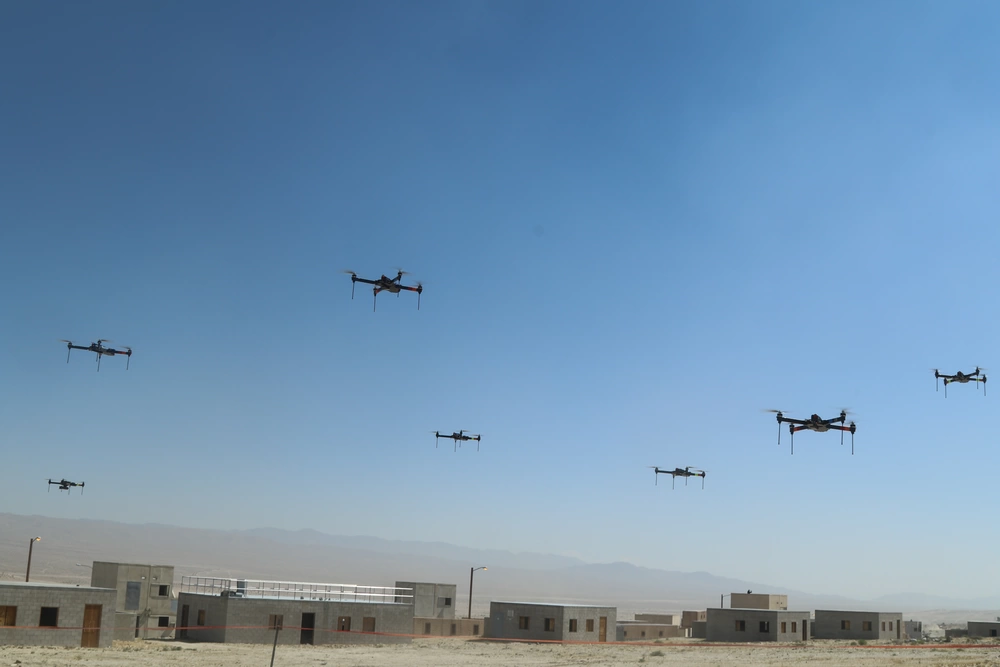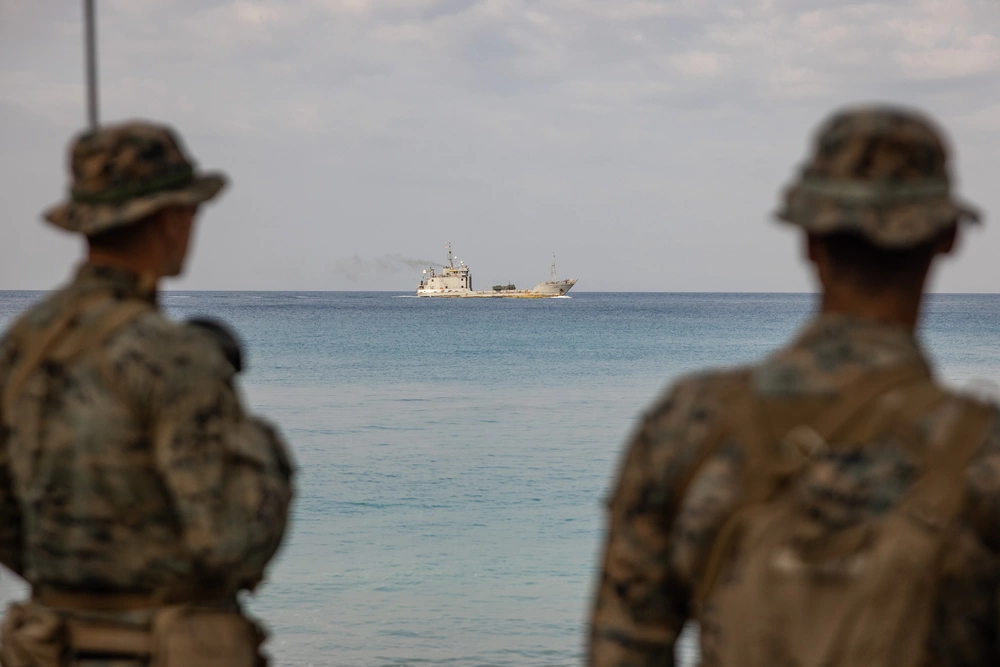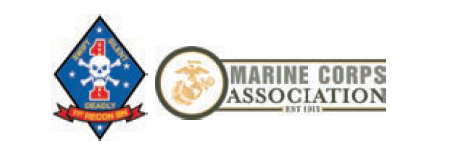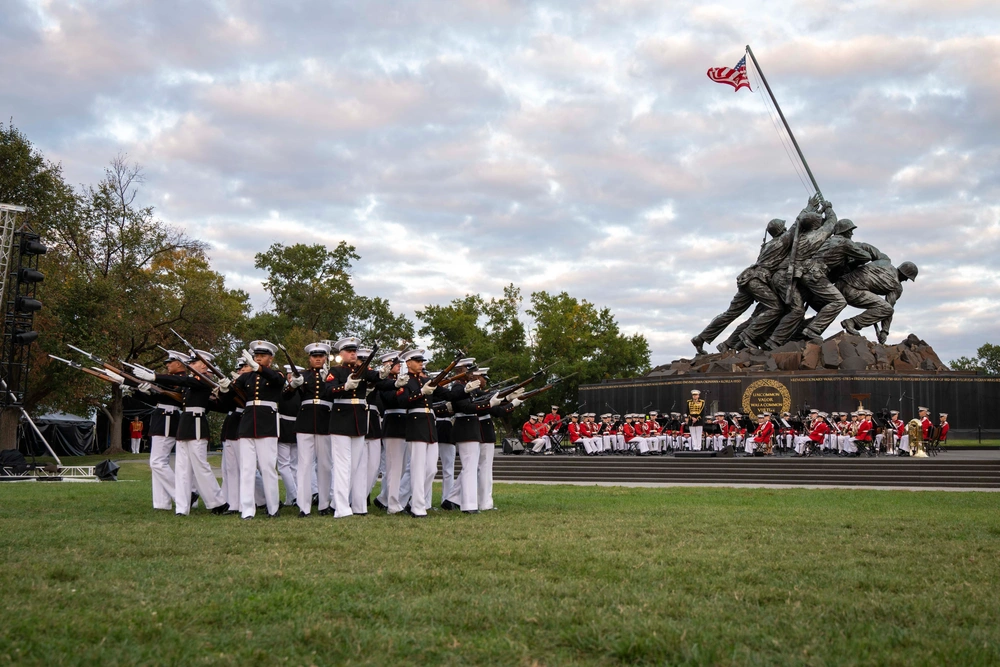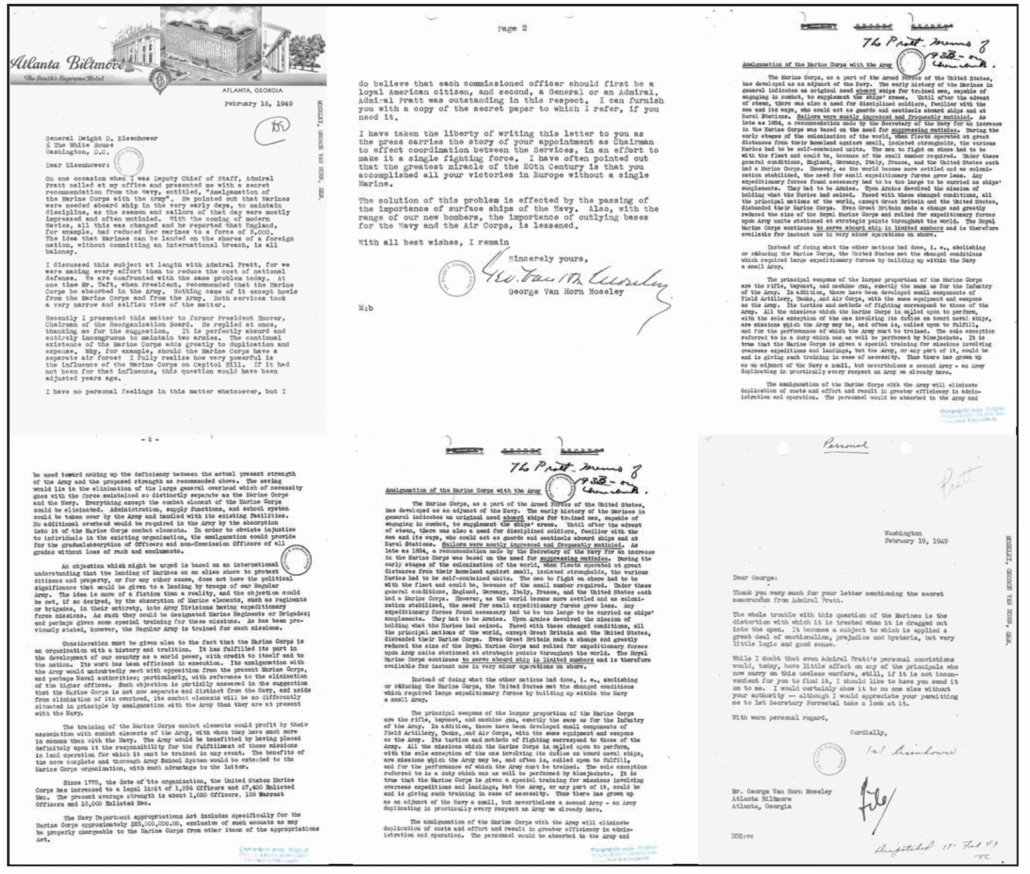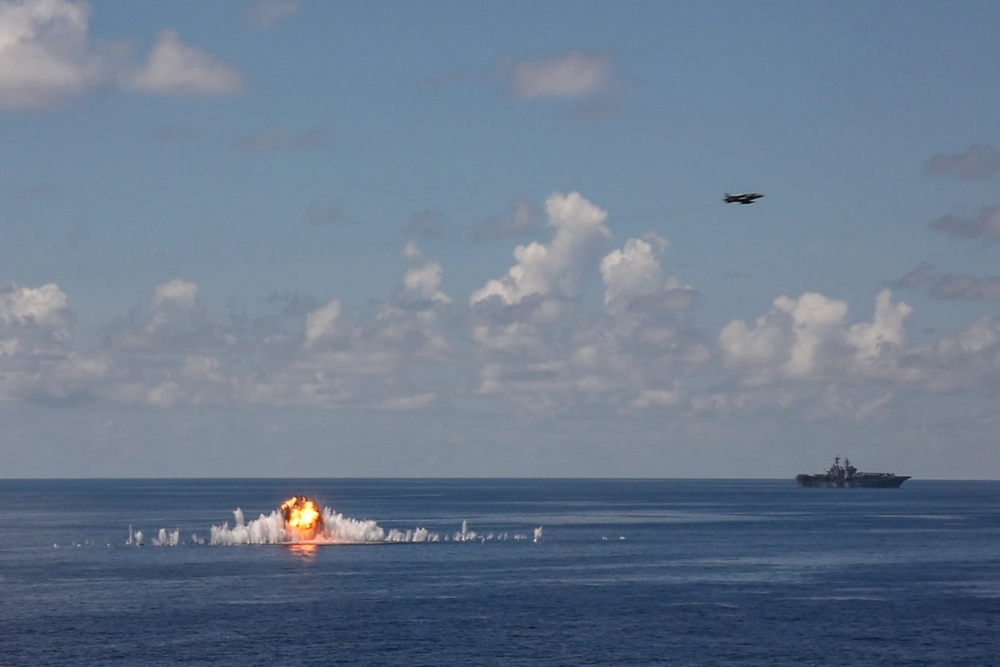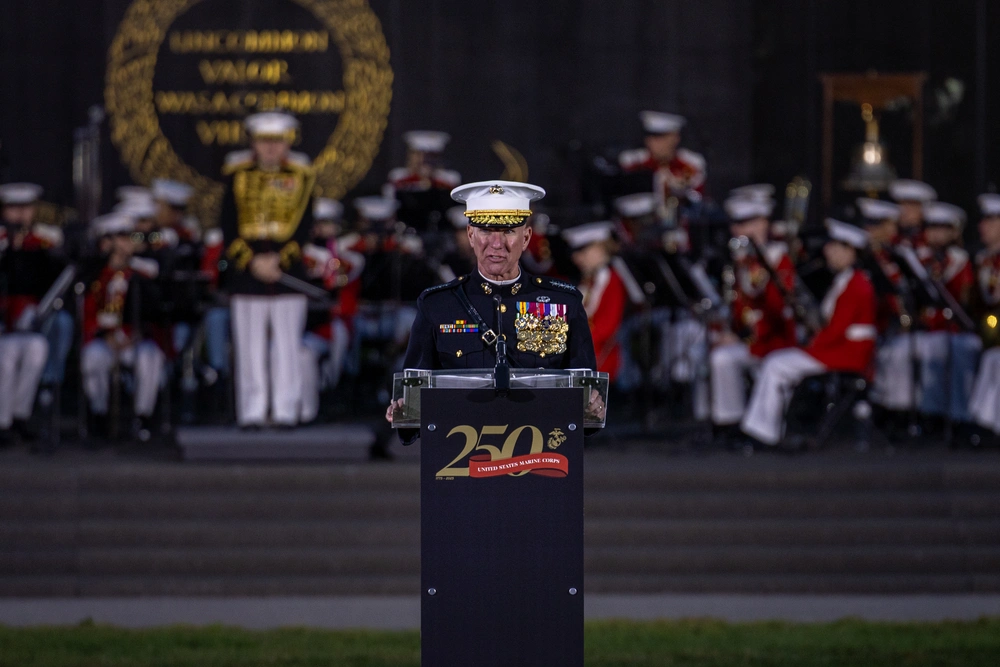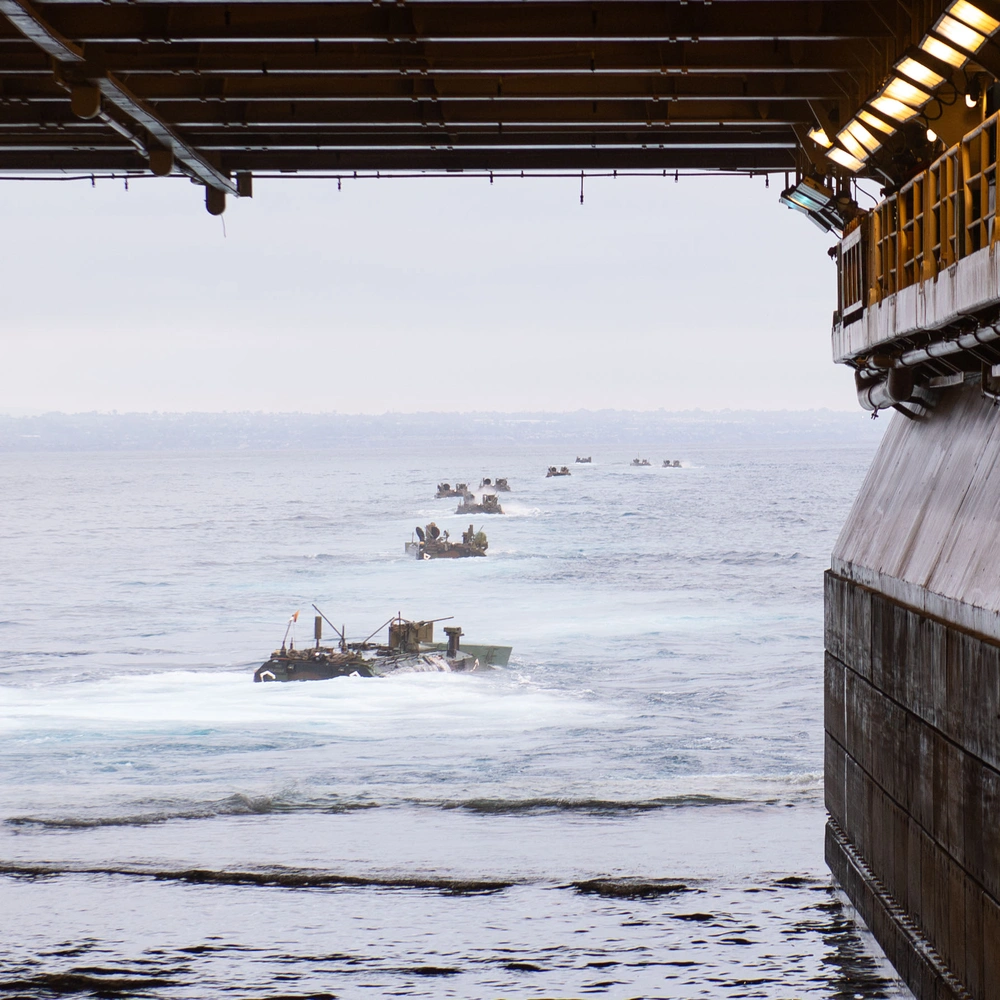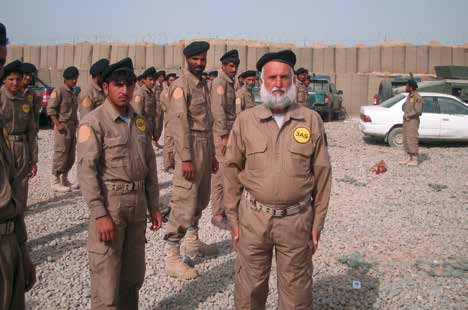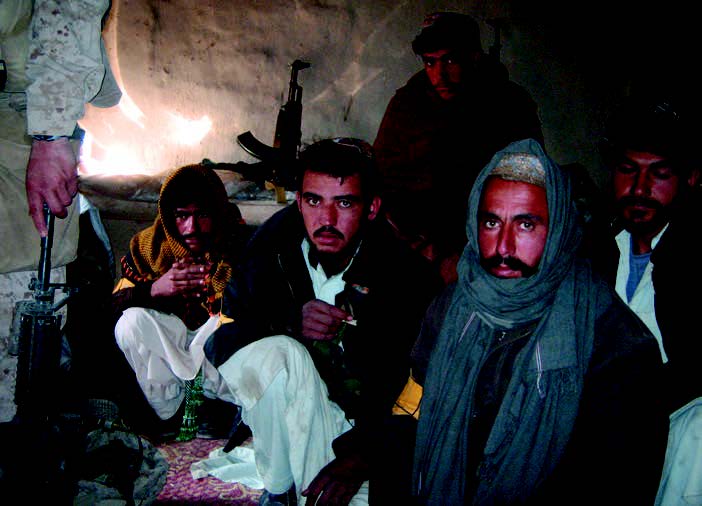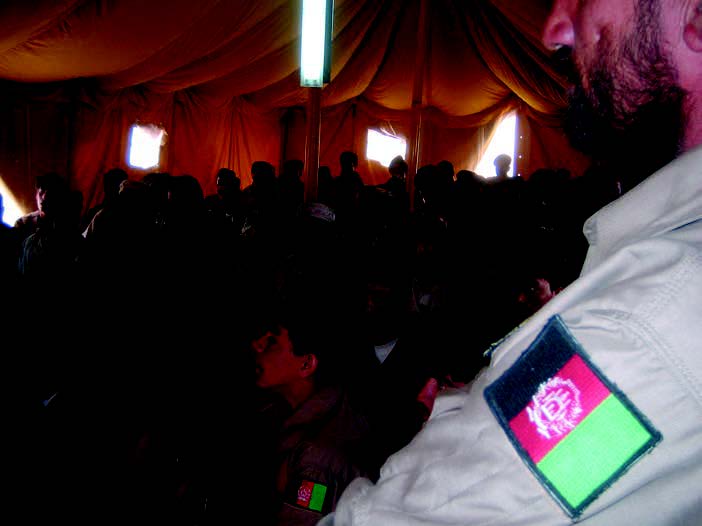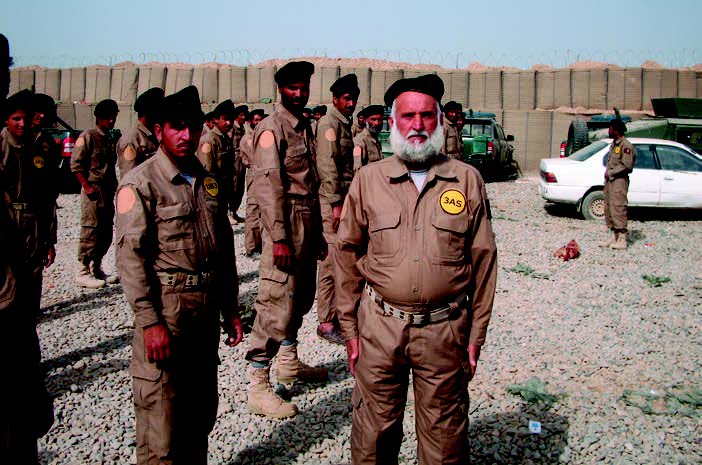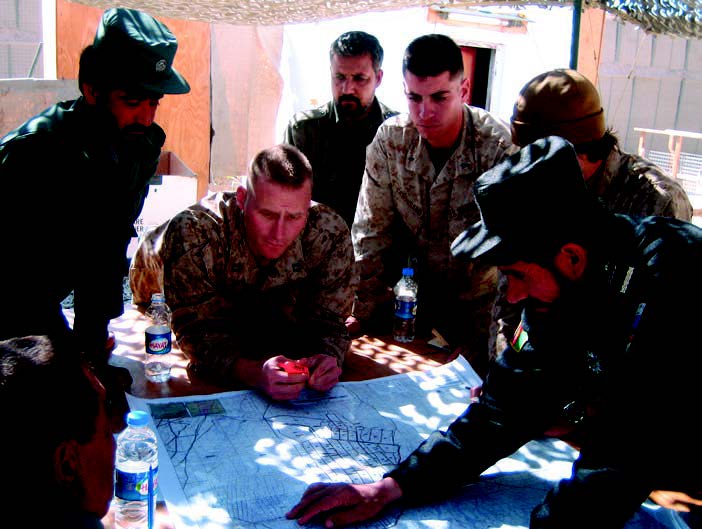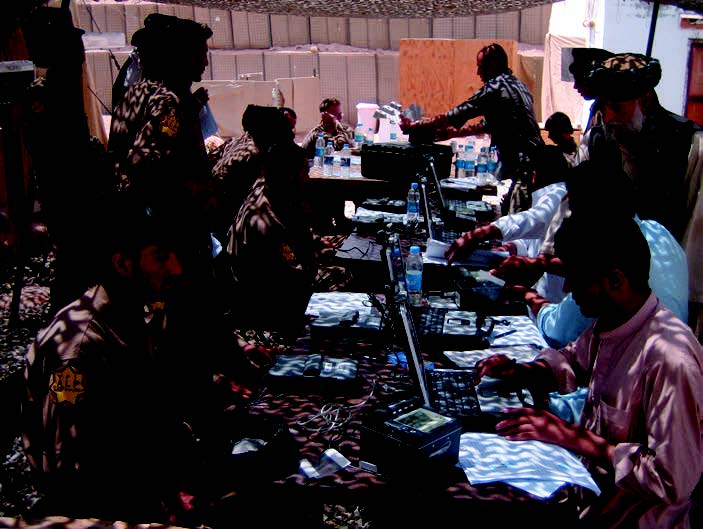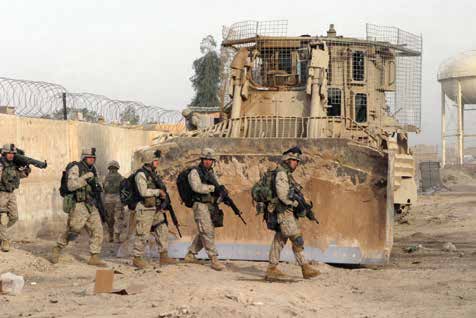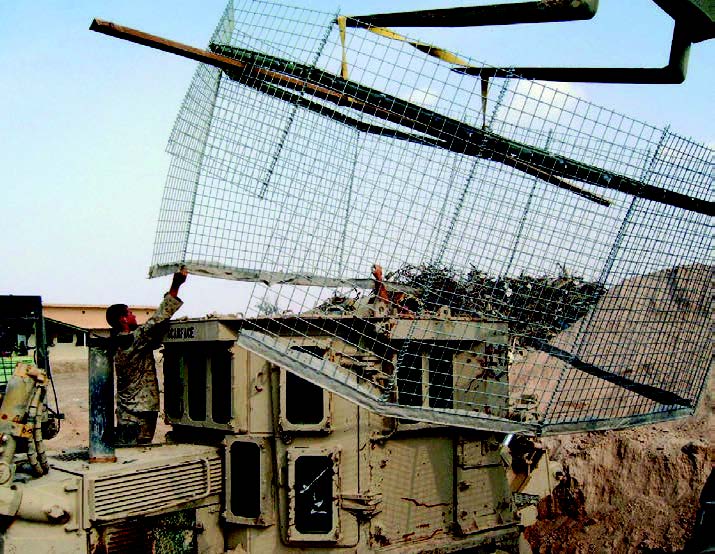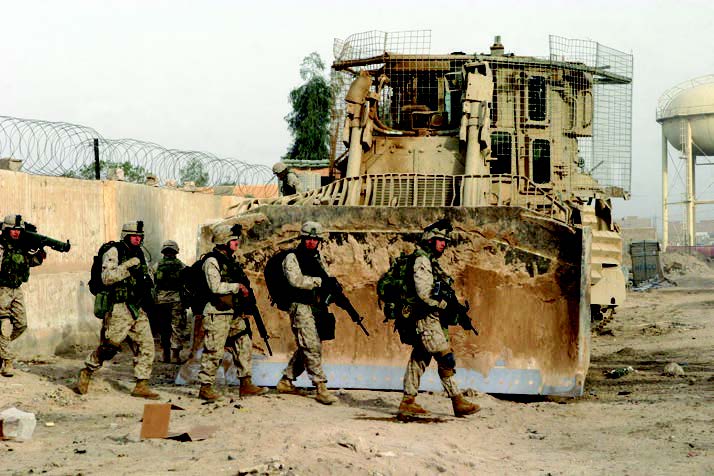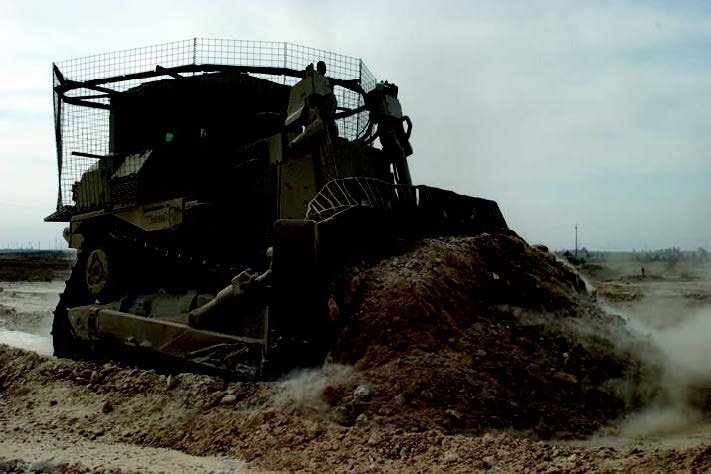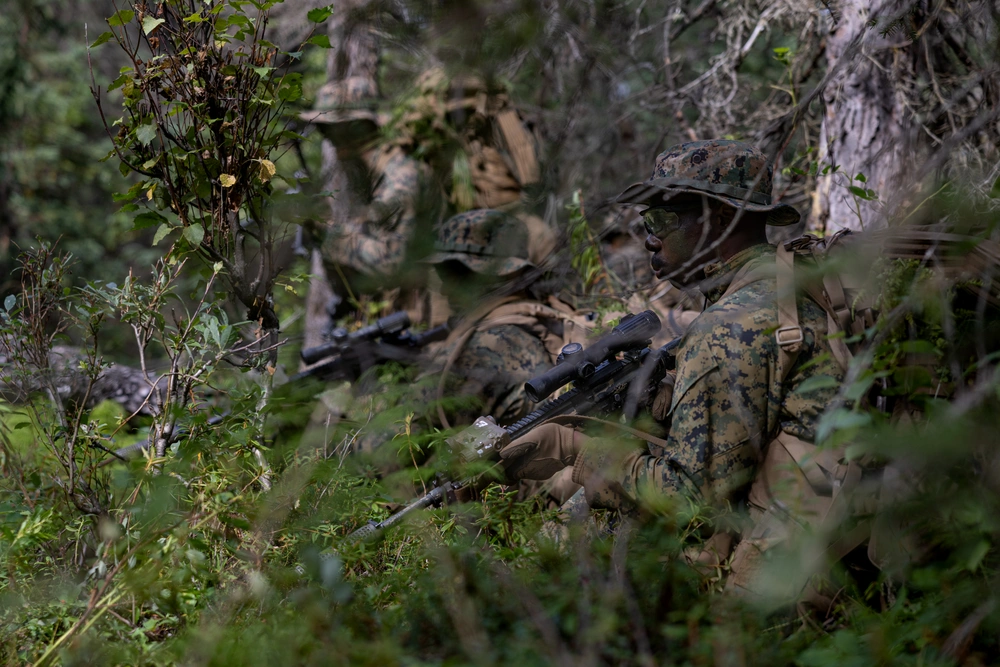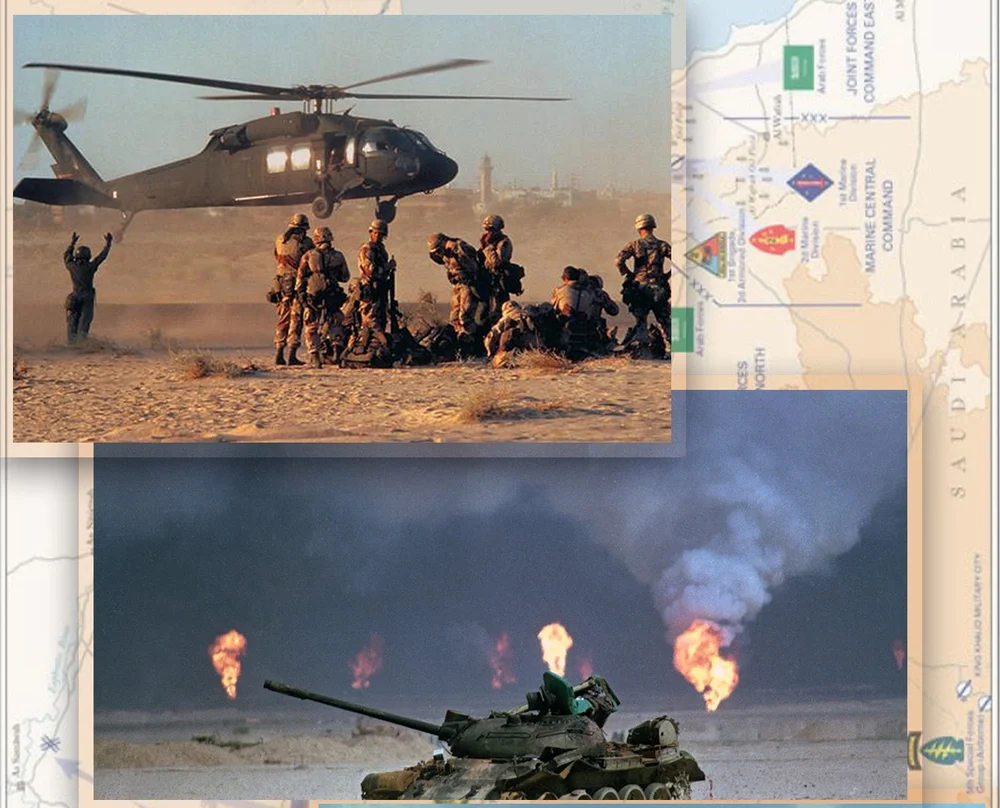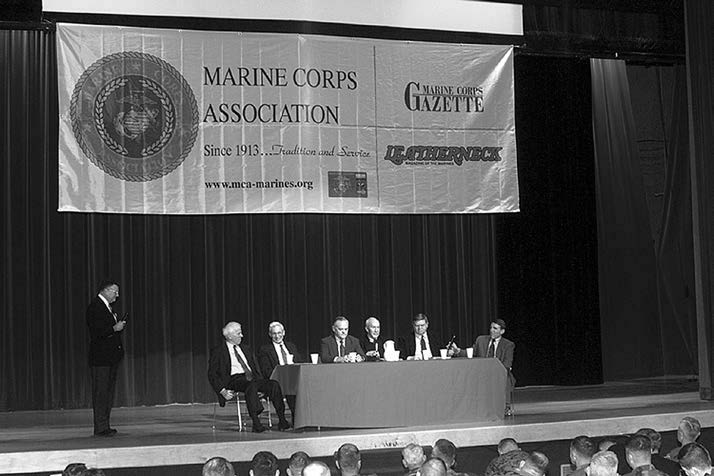The fires revolution the Marine Corps missed
One of the central premises of Marine Corps Force Design was the evolving relationship between precision and mass. The Marine Corps subscribed to the thesis that precision strike was rendering mass increasingly obsolete. While the Service correctly recognized the changing character of war, its diagnosis missed some critical points. Mass remains a crucial component of warfighting, albeit with changing characteristics. Precision alone is an insufficient counter for mass. Precision weapons must be employed at a scale that brings their own character of mass—the emerging trend of precision mass.1 The misdiagnosis has led the Service to focus on the wrong prescription. The Service has made significant investments in exquisite precision-strike capabilities. While these systems mark revolutionary change for the Marine Corps, they follow troubling trends in the DOD, focusing on exquisite, low-density acquisition projects. To be sure, these are highly lethal and capable systems, but they may be too low-density to contend with the mass that our pacing adversary will bring to a conflict. The Marine Corps must reckon with this emerging trend and undertake a course correction to embrace precision mass.
Strategic Context
This argument begins from a recognition that many aspects of the Service strategy are sound. Specifically, the focus on China as the pacing threat and the regional focus on countering China in the Western Pacific are sound. The focus aligns well with the strategic guidance in the 2018 National Defense Strategy and its subsequent updates. It also aligns with the strategy of denial, which has been espoused by top civilian policy leaders within the Pentagon—the strategy which states the United States’ primary objective is to deny China regional hegemony in Asia, and the best way to do so is to contest in the Indo-Pacific.2
In China’s pursuit of regional hegemony, Taiwan is the most significant prize—and the prize for which China would most likely resort to force and war with the United States and its allies to achieve. To that end, the Marine Corps developed concepts focused on securing and maintaining key maritime terrain within the first island chain, within China’s weapon engagement zone, of its highly capable precision-strike capabilities. These concepts envision Marines deployed across key maritime terrain in survivable and risk-tolerant formations—conducting sea-denial operations and extending the reach of the Joint Force through organic precision strike, target acquisition for joint prosecution, and disrupting the People’s Liberation Army’s (PLA) targeting cycle through reconnaissance and counterreconnaissance.
While this strategy is sound, the question is whether the Service has chosen the right tools. To implement this strategy effectively, the Marine Corps must possess a scalable form of precision fires.
The Emergence of Precision Mass
Despite the Marine Corps’ efforts to shift from mass to precision, evidence from recent conflicts suggests that mass has evolved rather than faded into irrelevance. Michael Horowitz described the trend of precision mass in Foreign Affairs3 and elsewhere as the ability of militaries to reintroduce mass to the battlefield, despite many predictions that precision was antithetical to the existence of mass on future battlefields.4 However, the return of mass is not mass as it was; heavy, armored vehicles and large formations still exist, but they are held at risk by low-cost, attritable, precision systems increasingly imbued with autonomy. Employed at scale, these systems demonstrate the evolution of mass.
Unmanned precision systems are nothing new. Perhaps the most compelling example of the capabilities of exquisite precision-strike systems against traditional mass is the incident referred to as the “Highway of Death,” the name describing the carnage unleashed on the Iraqi Army retreating from Kuwait in 1991. There are numerous additional examples from the long wars of the Middle East. Archives are full of drone footage of insurgents burying improvised explosive devices next to a road, only to be killed by a Hellfire missile. Precision strike was also a key component of the “by, with, and through” counter-ISIS campaign. The United States has also perfected a form of surgical precision, evidenced by events like the assassination of Qasem Soleimani, where MQ-9s conducted surveillance and delivered a bladed variant of a Hellfire meant to eliminate a specific target with minimal collateral damage. Other types of warheads can also be delivered with the same precision, making high-value targets such as armored vehicles and the concentration of traditional mass on the battlefield a liability. This type of precision led some to believe that mass was becoming a relic of the past.
This is far from the case. We have seen in recent conflicts that powerful state actors (namely Russia), seeking to pursue objectives through force, still utilize mass as an instrument. The war in Ukraine still features all the traditional features of mass, including sizable infantry formations and armored vehicles, but this mass must contend with the proliferation of precision. Both Ukraine and Russia have forms of exquisite precision weapons, but the true evolution is the increasing ubiquity of precision-mass systems.
This new type of precision weapon differs in key aspects from exquisite precision. In general, these systems lack the kind of surgical precision described above and are generally less capable compared to exquisite systems on a one-to-one basis. However, with less exquisite capability comes a cheaper price tag, and it is feasible to produce at a scale that keeps costs per system orders of magnitude cheaper. These precision mass systems are also often used as single-use munitions or one-way attacks rather than platforms that must be survivable.
Precision mass systems have been utilized at the tactical and operational levels. At the tactical level, first-person-view drones have become ubiquitous in recent conflicts, including the Ukrainian War, the Syrian Civil War, and the war in Gaza.
At the operational level, the Iranian-designed Shahed drone has become the poster child for the precision-mass movement trend. The Shahed 136 is a group 3 unmanned aerial system (UAS) designed for one-way attack missions, with open-source operational range estimates ranging from 1,000 to 2,000 miles.5 The Shahed 136, and its Russian-produced variant Geran-2, has become a favorite of the Russians to conduct long-range strikes on Ukrainian infrastructure, cities, and fixed military targets. The Russians heavily utilize them, despite their slow speed, loud noise, and relative ease of interception by various forms of air defense. The redeeming quality of this weapon is its cost and ease of manufacturing. At an estimated cost of $30,000 per unit and with a large initial supply from Iran, now supplemented by domestic Russian production, the Russian military has turned a seemingly crude tool into an effective operational capability.6
Data on the usage of Shaheds throughout the conflict demonstrates how the effectiveness of a weapon like the Shahed increases as it scales.7 In Figure 1, each point represents a Russian attack with Shahed-style drones, as shown by the date and the number of drones in the attack. The attack size has grown as the conflict continues, with a notable increase beginning in the summer of 2024.
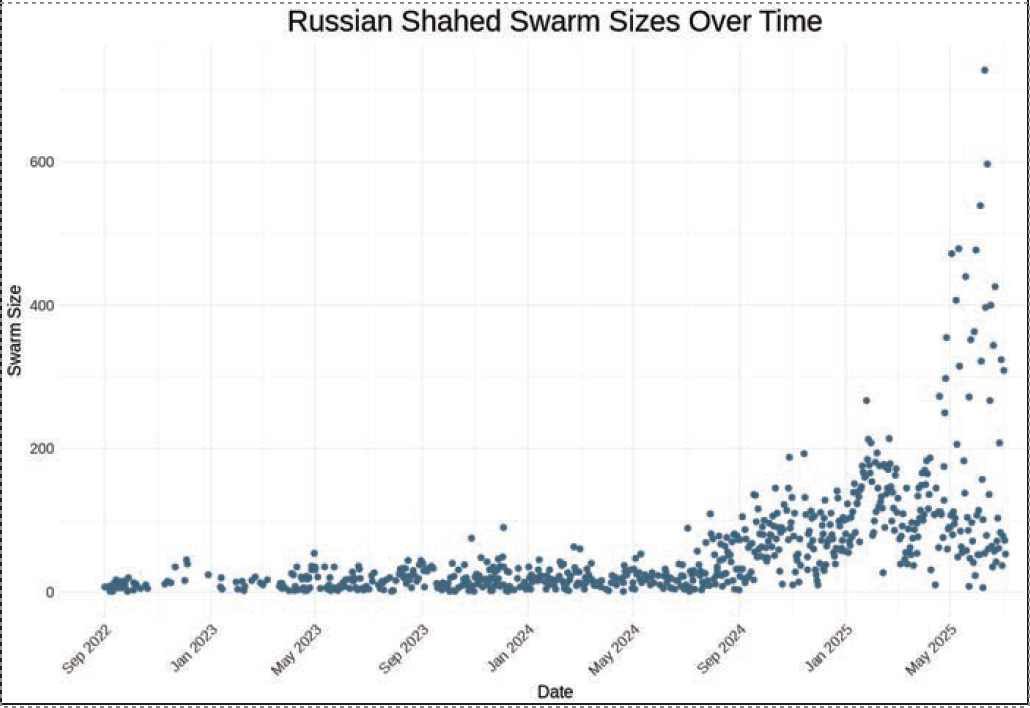
This increase in mass has come with an increase in effectiveness. Early in the war, when attack sizes were small, Ukrainian air defenses routinely achieved shootdown rates of 80 to 100 percent—a cumulative shootdown rate of 85.6 percent between September 2022 and September 2024. This changed when the attack sizes began to increase. In August 2024, Russia sharply increased the number of Shaheds in a single attack. The increase in attack volume resulted in a decline in the shootdown rate—Ukrainian air defenses could not keep up. Figure 2 shows that, as of this writing, the Ukrainians have been unable to catch up.
With shoot-down rates hovering around 60 percent, an attack of 150 Shaheds will see about 60 find their way through defenses to hit a target. This is not an impressive figure by the standards of exquisite precision systems. Still, due to the affordability and scalability of Shaheds, they remain a preferred weapon of the Russians and a powerful example of the utility of precision mass.8
In addition to the Russian use case, the Shahed and other systems like it have also been used in the Houthi campaign to disrupt shipping in the Red Sea. The Houthi campaign featured the weapons in a different context, but most notably, they did not employ the systems in large, massed attacks. For the most part, these systems have been used in small enough attack sizes that the surface combatants in the area have been able to defend against the threats.9 (As an aside, this does not mean the attacks are not having the desired effects, as global shipping has been massively disrupted.) However, U.S. ships have had to contend with these threats and expend air and missile defense capacity. In theory, if these one-way attack drones were employed in mass, they could overwhelm a ship’s defenses and begin to hit the target.10 Understanding this maritime use and the potential against surface targets is especially relevant for the Marine Corps.
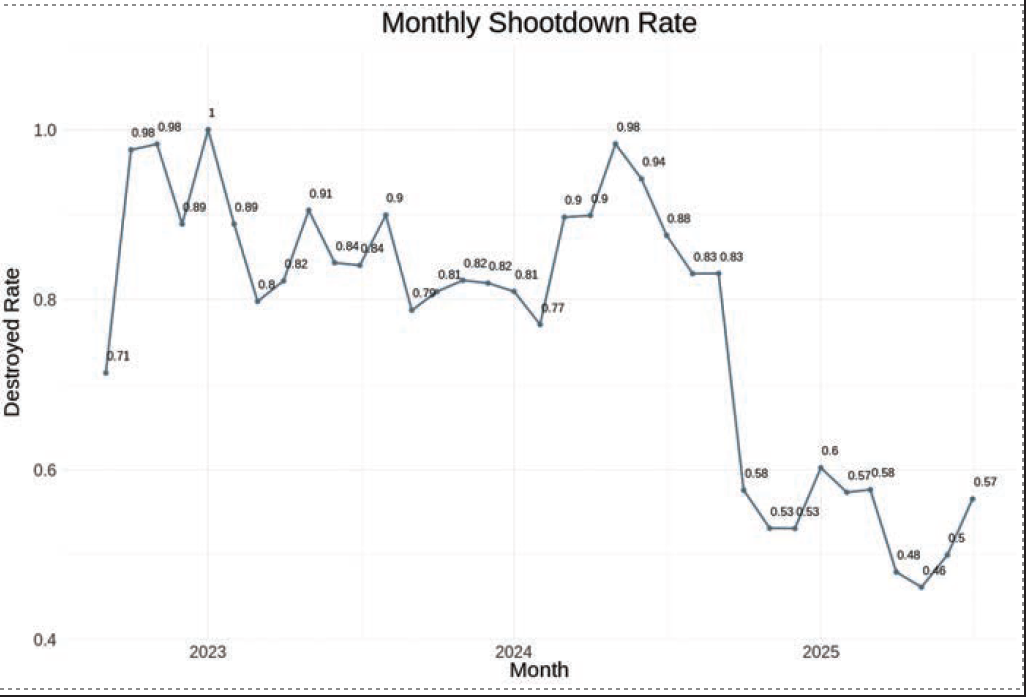
What the Marine Corps Missed
Marine Corps modernization was primarily built around the stand-in force in the Western Pacific. As previously stated, the scenario of gravest concern is China attempting to reunify with Taiwan by force. The operation would feature a massive amphibious invasion if Beijing pursued this goal militarily. Between the PLA Navy with its surface combatants, landing craft, support vessels, and Chinese maritime militia, the number of ships would be counted in thousands.
In response to this challenge, the Marine Corps designed its force around exquisite programs like Navy-Marine Expeditionary Ship Interdiction System, MQ-9A, and Long-Range Anti-Ship Missile (LRASM). This approach presumed the predominance of precision. However, precision in insufficient quantity cannot overcome mass. While highly capable, the Marine Corps’ focus on exquisite systems will be limited in number, expensive to field, and optimized for high-value targets. They are not well-suited to deal with the sheer volume of platforms that would be involved in a cross-strait invasion. While these weapons can credibly hold high-value targets at risk, when fielded in low density, they will not be sufficient. Moreover, the use of these exquisite systems represents a reliance on complex kill chains, which will be discussed in more detail below.
This is where the Marine Corps missed a critical opportunity. The Service failed to anticipate the emergence of precision mass—using large numbers of lower-cost, expendable, and increasingly autonomous munitions. The Marine Corps is ill-equipped to deal with the mass it would encounter in a Taiwan invasion scenario.
Missile Math: Salvo Analysis
A critical component to achieving mass is scalability and affordability. It is obvious that precision mass systems are cheaper on a one-to-one basis. However, to achieve these effects, they must be employed in mass. Do cost savings hold when considering employment in mass?
As a preliminary example, consider the engagement of a Luyang III-class destroyer. The cube root rule is often used to determine the amount of ordnance required to sink a ship.10 The rule says that the cube root of the ship’s total weight in thousands of tons is a good planning factor for the weight of explosives in thousand-pound bomb equivalent units required to sink it. In this example, the Luyang III weighs 7,500 tons, which, according to the cube root rule, would require approximately 1,957 pounds of explosive ordnance to sink. The table below shows the minimum number of hits required from several weapons to sink a Luyang III, along with the associated cost. Here, two anti-ship munitions are compared to the Shahed-136.

The Shahed requires many more hits to bring the minimum ordnance to the target, but it does so at a fraction of the cost. However, this does not account for the defensive capabilities of the targeted Luyang III. A Shahed or similar munition does not have the countermeasures to get past a ship’s multi-layered defense like the more exquisite systems do. Instead, they would rely on being employed in mass to overwhelm defenses and score enough hits to sink the ship or damage it past combat effectiveness.
To apply this to the Luyang case, we could expand our minimum salvo analysis by conservatively stating that a Luyang destroyer can comfortably intercept two well-aimed anti-ship missiles. This would mean the minimum salvo would have to be increased to 5 Naval Strike Missiles (NSM) at $9.5 million, or 4 LRASMs totaling $12.8 million. A Luyang and its layered defenses could easily handle small formations of Shahed-like attacks. The ship could likely handle swarms measured in scores. There will, however, be a saturation point, and at the cost of the NSM salvo at $9.5 million, this could buy 316 Shaheds, or in the $12.8 million LRASM case, this could buy 426 Shaheds. The saturation point of defenses involves some guesswork and would require testing and development of tactics. But for illustrative purposes, if the saturation point were 50 or 100 drones, you could effectively engage 6 or 3 ships, respectively, at the same cost of one NSM engagement.11
This imagined long-range one-way attack capability may also be utilized in other ways. It could be used as part of a complex attack, combining these low-cost munitions with high-end anti-ship missiles and non-kinetic munitions. It is also true that these systems are a better match for the many hundreds of landing vessels that would be present in a Taiwan invasion scenario. The Joint Force will not possess enough precision missiles to target every PLA Navy and maritime militia vessel involved in the invasion; therefore, precision alone will not be sufficient. In this case, mass must be countered with mass. One-way attack drones, deployed at scale, present a feasible option for doing so.
Designing the Kill Chain
Kill chains prosecuted by exquisite precision systems, such as the NSM, are often described by the sequence of discrete events: find, fix, track, target, engage, and assess (F2T2EA). This sequence is intuitive and straightforward, but the process can often involve multiple systems, significant data inputs, and a complex web of command relationships to ensure the kill chain functions properly. Much of the stand-in force’s warfighting role concerning the Joint Force is built around some aspect of the F2T2EA cycle. The initial focus on long-range, anti-ship fires heavily emphasized the engagement part of the chain. As the Service has learned and made evident in its subsequent updates, focusing solely on engagement is insufficient. As the Service was forced to reckon with this, the value proposition evolved to include reconnaissance and counterreconnaissance, and more recently, focused on serving as the joint terminal attack controller of the Joint Force.12 In short, the Service seeks to add value across the F2T2EA targeting cycle—doing jobs it is suitable for it based on its geographic placement.
The by-product of this focus has made the Service’s value proposition dependent on continuous connectivity with the Joint Force and intact command and control. A cursory search of contemporary Chinese military thought reveals that joint communication will undoubtedly be a target, and a conflict would likely involve periods of varying levels of communication and command and control degradation.13 Given this likelihood, the Marine Corps should evaluate its Service strategy and ensure its value proposition is not brittle in the face of likely enemy actions.
This is where precision mass enabled by autonomy offers an alternative. A kill chain designed around precision mass enabled by autonomy can compress the required steps and reduce reliance on fragile enabling components. Again, consider the use of a Shahed-like long-range, one-way-attack drone by Marine forces in a Taiwan invasion scenario. In this scenario, the PLA invasion fleet could only feasibly use a finite number of maritime routes. Utilizing pre-conflict indications and warnings, the routes may become more evident. To employ these one-way attack drones, the kill chain can be reduced to
- Find or confirm the approach corridor, and have drones fly out to pre-designated kill boxes.
- Targets are acquired by onboard computer vision or other appropriate AI models.
- Targets are engaged autonomously.
This model reduces the kill chain to “find, target, engage,” thus eliminating the need for persistent tracking, human-in-the-loop decisions, and complex data fusion during execution. This approach also allows for massed fires, which are critical for achieving the desired effects of saturating air and missile defense systems. The C2 burden of the entire F2T2EA cycle would make it near impossible to accomplish these massed fires and would make fires impossible in the case of denied C2 communications.
This shift simplifies operations, allows for massed fires, and removes dependencies on the other systems that could make the kill chain brittle. This is especially prescient when some of the Service’s targeting platforms are far from survivable. Notably, MQ-9 shootdowns by Houthi rebels have become a routine event.14
Precision mass, in this context, is not just a cost-effective strike option—it is a way to diversify and harden the Joint Force’s approach to targeting, making it more resilient in a degraded communications environment. Ultimately, larger magazine depths of less expensive munitions and autonomy could enable the prosecution of more targets, adding efficiency to the cycle.
Implementation and Challenges
The Marine Corps’ failure to recognize and adopt precision mass can be symptomatic of larger DOD acquisition trends—a focus on exquisite acquisition projects led to a particular and limited view of what precision could be. Ironically, the course correction needed may also come from the larger DOD. The Office of the Secretary of Defense (OSD) Replicator initiative was created to help build this type of attritable precision mass systems. Part of the initiative signals to the U.S. defense industry that this capability is desired and needed. This is crucial, as industrial capacity has played a critical role in operationalizing these weapons at scale for both Ukraine and Russia.15 In this initiative, OSD has essentially taken the Field of Dreams approach: if they build it, the services will come. Replicator skipped the Services-led capability development process. Instead, OSD is buying systems, and it is up to the Services to turn them into a capability.
However, OSD alone will not save the Marine Corps. For these systems to become a capability, the Service must ultimately take action. Specifically, the Marine Corps must create organizational structure, develop concepts, define its own requirements, and take other actions across the DOTMLPF spectrum.
From an organizational structural perspective, this will be a challenge. Employing an operational capability, such as a long-range one-way attack, at scale will likely require an O-5-level command structure. However, this will likely mean considering further cuts to the existing structure beyond Force Design’s initial shuffle—a challenging proposition.
The existing use cases described in this article, along with the proposed compression of the kill chain with autonomy, offer a starting point for creating concepts to employ precision mass; however, they require detailed attention and refinement. These concepts can enable the Marine Corps to write requirements tailored to its specific needs.
It is essential to stress that discipline in the requirements process is crucial. Requirements creep is real, and it can undermine the value proposition of these systems. The value proposition of precision mass is highly contingent on affordability. Should this be done in an undisciplined manner, people in the process will see a group-3 UAS being developed and desire it to have a modular payload for every possible scenario, make it resilient to every form of adversary attack, and be able to operate in any imaginable environment. The result will be an overpriced Frankenstein, highly capable, unaffordable, and low-density—back to where we began.
Conclusion
The Marine Corps was bold in implementing Force Design. Its focus on the evolving interplay of precision and mass led to the bold move of shedding tanks and adopting precision fires. However, course correction is needed. In the Marine Corps’ most challenging warfighting scenarios on the horizon, it will have to contend with mass. Precision is a part of the answer in countering this mass, but it must scale. Embracing precision mass offers a viable way ahead.
>Maj Barlow is a Combat Engineer Officer. He most recently served as an Operations Research Analyst with the Operations Analysis Directorate, Combat Development & Integration. He is currently a student at the Maritime Advanced Warfighting School, U.S. Naval War College.
Notes
1. Machael Horowitz, “Battles of Precise Mass: Technology is remaking War—and America Must Adapt,” Foreign Affairs, October 22, 2024, https://www.foreignaffairs.com/world/battles-precise-mass-technology-war-horowitz.
2. Colby Elbridge, The Strategy of Denial: American Defense in an Age of Great Power Conflict (New Haven: Yale University Press, 2021).
3. Ibid.
4. Michael Horowitz and Joshua Schwartz, “Stealth and Scale: Quality, Quantity, and Modern Military Power,” War on the Rocks, December 18, 2024, https://warontherocks.
com/2024/12/stealth-and-scale-quality-quantity-and-modern-military-power.
5. Uzi Rubin, “Russia’s Iranian-Made UAVs: A Technical Profile,” RUSI, January 13, 2023, https://www.rusi.org/explore-our-research/publications/commentary/russias-iranian-made-uavs-technical-profile.
6. Ibid.
7. Data available in open source. Petro Ivaniuk, “Massive Missile Attacks on Ukraine,” Kaggle, n.d., https://www.kaggle.com/datasets/piterfm/massive-missile-attacks-on-ukraine. Note: data last updated on August 25, 2025. Data included in graphics up to July 31, 2025, to avoid truncating monthly numbers.
8. Many of these insights were originally shared in Patrick Reilly and Aaron Barlow, “Sustained Russian Shahed Swarms: The War of Precision Mass Continues,” War Quants, February 2025, https://www.warquants.com/p/sustained-russian-shahed-swarms-the.
9. Garrett Nada, “Timeline: Houthi Attacks,” Wilson Center, July 26, 2024, https://www.wilsoncenter.org/article/timeline-houthi-attacks.
10. Colton Buyers, “Carrier 2.0: The Drone Carrier Revolution,” War Quants, December 2024, https://www.warquants.com/p/carrier-20-the-drone-carrier-revolution.
11. Salvo analysis informed by the methods of Wayne Hughes. Wayne P. Hughes, Jr., “A Salvo Model of Warships in Missile Combat Used to Evaluate Their Staying Power,” Naval Research Logistics 42, No. 2 (1995), https://onlinelibrary.wiley.com/doi/10.1002/1520-6750
(199503)42:2%3C267::AID-NAV3220420
209%3E3.0.CO;2-Y.
12. General Eric Smith, 39th Commandant’s Planning Guidance, August 2024, (Washington, DC: March 2025).
13. Relevant concepts: Informatized Local Wars and Systems Confrontation and Systems Destruction Warfare.
14. Luis Martinez, “Houthis Shoot Down Growing Number of US Drones,” ABC News, April 2025, https://abcnews.go.com/Politics/houthis-shoot-growing-number-us-drones/story?id=121099082.
15. Sean Harper, “Factory-to-Frontline: How Ukraine’s 2025 Drone Surge is Reshaping the Battlefield,” War Quants, March 2025, https://www.warquants.com/p/factory-to-frontline-pipeline.


